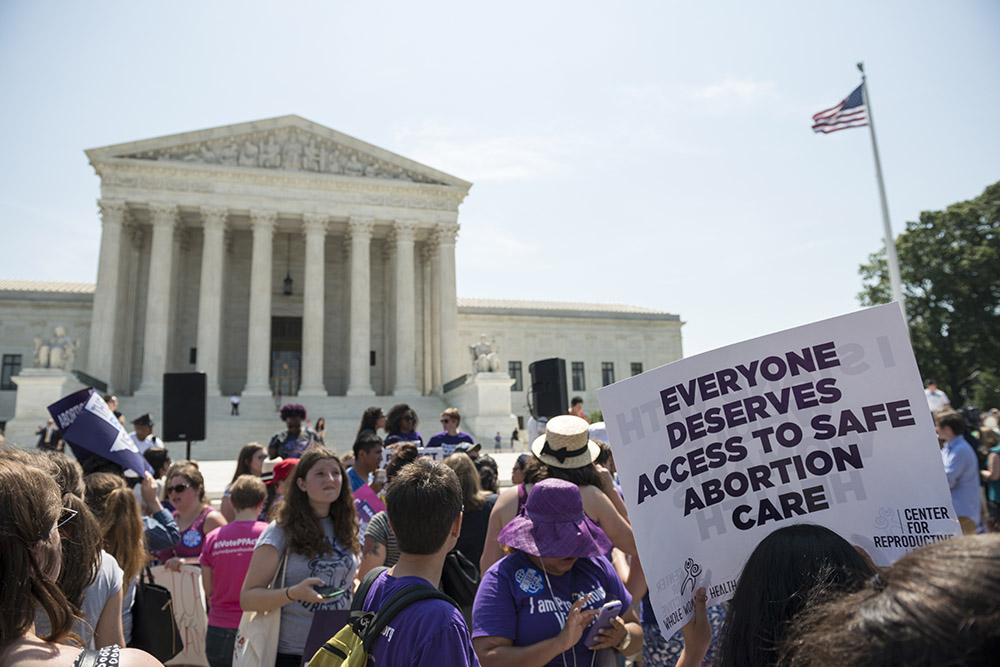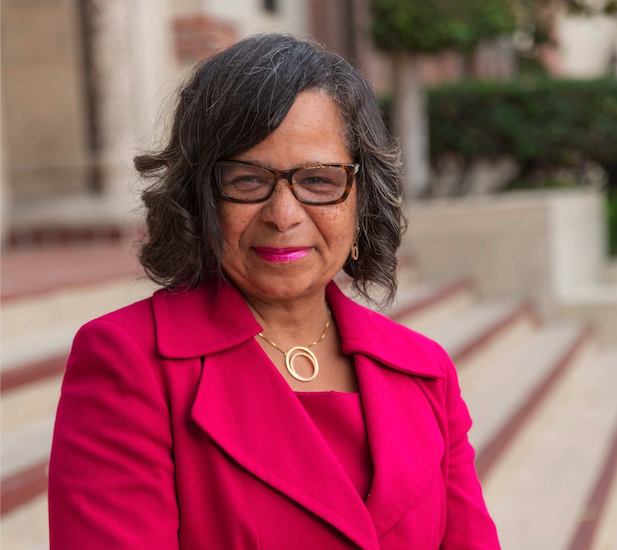In the year since the U.S. Supreme Court overturned the landmark Roe v. Wade decision, the national debate over abortion access and reproductive rights has continued to rage on.

In its June 24, 2022 decision in Dobbs v. Jackson Women’s Health Organization, the court reversed nearly 50 years of precedent that women had a fundamental right to abortion and returned the power of regulating abortion to the states.
In the aftermath of the decision, a crazy quilt of state abortion laws has emerged, along with a political backlash that is still roiling the electoral landscape, potentially dimming the prospects for candidates who supported Dobbs.

“This decision may have been startling to some, but was not unforeseen,” says Pamela Clouser McCann, associate professor at the USC Sol Price School of Public Policy. “Decades of activism, consequential elections, judicial nominations, and dynamic state and federal policy choices across governing institutions provided a lengthy lead-up to Dobbs v. Jackson.”
In the time from the Roe v. Wade decision in 1973 to Dobbs in 2022, over one thousand restrictions to abortion rights were passed at the state level, according to the Guttmacher Institute.
Clouser McCann, who researches U.S. political institutions, intergovernmental politics and health policy among other topics, has designed a new general education course that she’s initially titled “Vagina Politics and Public Policy: How Gender, Identity, and Power Shape Policy.” She says the political and policy fallout post-Dobbs continues throughout the country, with many states passing new policies that range from “protecting to restricting or even banning abortion.”
Consequences of reversing Roe v. Wade and federal abortion rights
“We have to think about the intended and unintended consequences of the decisions made by government officials,” says LaVonna Lewis, Associate Dean of Diversity, Equity, and Inclusion and a teaching professor of public policy at the USC Price School. “The overturning of Roe v. Wade was focused on protecting life in the womb – the intended consequence – while giving limited if any thought to the lives of others. The unintended consequences include putting the health and wellness of others at risk – physically, emotionally and financially.”
Lewis says another major unintended consequence of the abortion rights rollback is the “disproportionate impact on low-income groups and BIPOC communities.”
In 2019, more than half of abortions were among women of color, according to the Centers for Disease Control and Prevention’s abortion surveillance data, and abortion rates were 3.6 times higher among non-Hispanic black women and 1.8 times higher among Hispanic women when compared to non-Hispanic white women.
The CDC points to disparities in rates of unintended pregnancies along with “structural factors, including unequal access to quality family planning services, economic disadvantage, and distrust of the medical system” as contributors to these higher abortion rates.
A patchwork of abortion laws and heightened concerns about reproductive health

Shortly after the Supreme Court decision, Mississippi’s “trigger law” went into effect, prohibiting abortions in Mississippi, except “where necessary for the preservation of the mother’s life or where the pregnancy was caused by rape.” Mississippi, which filed the Dobbs case that ultimately toppled Roe v. Wade, has some of the highest maternal and infant mortality rates in the nation, and a recent report showed that Black women were four times more likely than white women to die as a result of pregnancy.
Currently, nearly all abortions are banned in 14 states, and “about half of states are expected to try to enact bans on abortion or gestational limits on the procedure” according to a report by The New York Times.
“We have to be honest about the consequences of our federal system,” argues Lewis. “Rights are being taken away geographically, through state policies that are trapping many who don’t have the resources or luxury of exercising another choice regarding whether they are able to support a child – from birth to adulthood.”
Proposed restrictions on abortions have not been limited to surgical procedures. Abortion medications used to terminate pregnancies through 10 weeks gestation – which are now used in more than half of U.S. abortions, according to the Guttmacher Institute – are also being targeted.
Clouser McCann notes that although the U.S. Food and Drug Administration ruled in January 2023 that abortion pills could be provided by pharmacies in qualifying states, that regulatory choice was challenged in Texas courts. In addition, the Justice Department has appealed a Texas judge’s decision that would block access to mifepristone, an abortion medication approved by the FDA for use in the U.S. more than two decades ago.
Sixteen states along with the District of Columbia, though, have state laws that protect a woman’s right to an abortion, five of which do so throughout the pregnancy. “The beauty of our federal system in its variation and possibility of differences from state to state can also be ugly,” says Clouser McCann.
Abortion bans likely to energize Democrats in 2024, say USC political experts

While media coverage makes it seem like the issue divides Americans, the truth is more complicated, says Elizabeth Currid-Halkett, the James Irvine Chair in Urban and Regional Planning at the USC Price School.
“I think you could argue that this is a lens into the larger story of a ‘divided America’ – the media tells a very different story than what everyday Americans say about each other, irrespective of their politics,” says Currid-Halkett, who challenges conventional wisdom about America’s urban-rural divide in her new book “The Overlooked Americans.”
She points to data that shows that most Americans support abortion rights and did not support the decision to overturn Roe v. Wade. Further, she notes that voters “monumentally” defeated an anti-abortion constitutional amendment in a red state: Kansas.
“The impact on women and society is significant. The political impact is also huge,” says Christian Grose, academic director of the USC Schwarzenegger Institute for State and Global Policy and professor of political science and public policy at the USC Price School and the USC Dornsife College of Letters, Arts and Sciences.

He says the Dobbs decision aided Democrats in the 2022 midterm elections – specifically helping Democrats maintain control of the Senate and minimize losses in the House of Representatives. Continued rollbacks of reproductive freedoms, he says, “will energize Democratic voters in the 2024 general election” as well.
Several Republican candidates for president are actively touting their anti-abortion credentials. Florida Governor Ron DeSantis, for instance, recently signed a law banning abortion after six weeks of pregnancy. (The law is currently pending review by the Florida Supreme Court). But Grose says that combined with redistricting that was more favorable to Democrats in 2022 than in earlier decades, Republicans may be on the defensive going into the 2024 elections due to the Supreme Court decision: “[Former President] Trump’s three judicial appointees handed anti-abortion activists their most sought-after victory, but there may also be an electoral backlash at the polls in 2024.”